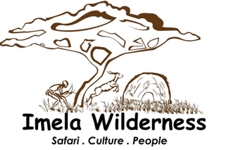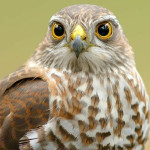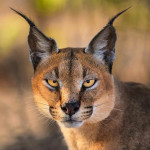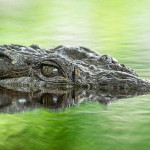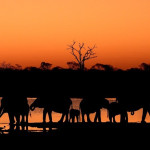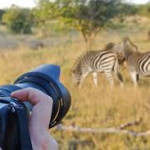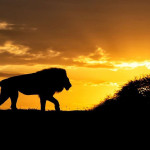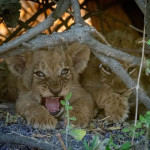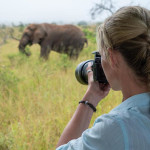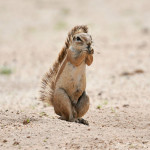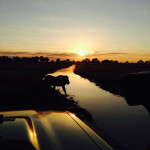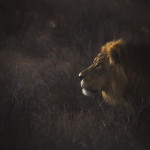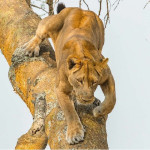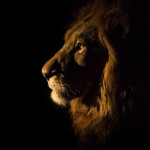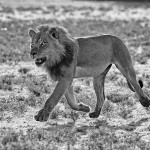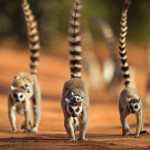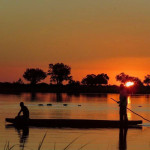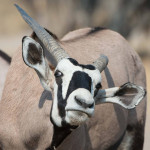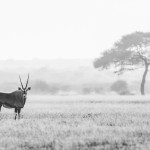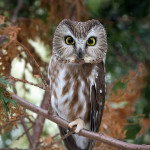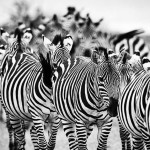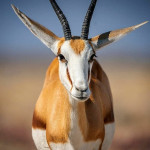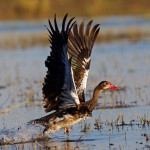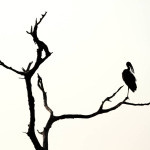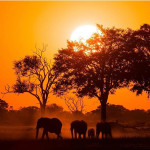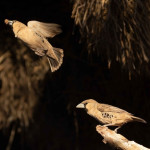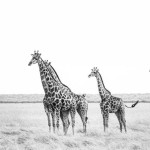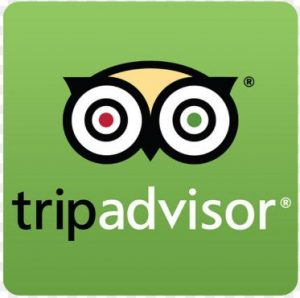
Lone Moon Photographic Highlights
Chobe-Maun Photographic Safari
LONE MOON PHOTOGRAPHIC HIGHLIGHTS
8 nights/9 days
MAUN > MOREMI/XAKANAXA > MOREMI/KHWAI > SAVUTI > CHOBE NATIONAL PARK/KASANE
Overview
Game Drives
Guided Walk
Boat Cruise
Photographic Tour
This photographic safari consists of a camping trip from Maun through the northern part of Botswana. The camping part is a guided group tour which covers elite tourist destinations in the country. Explore Botswana’s top game reserves where safari highlights include Chobe’s famously large herds of elephant, game drives in predator-rich Moremi Reserve and abundance of wildlife in Savuti located within Chobe National Park.
The unique aspect of embarking in this tour, is having a professional photographer with many years of experience photographing Botswana, along with a guide who understands the importance of lighting and being in the right position in order to capture the best moments in the best destinations in Botswana. The trip is suitable for both experienced and beginner photographers.
Daily Activity
DAY 1: MAUN
After your arrival at Maun International Airport, you will meet our representative with a signage board written “IMELA WILDERNESS”. Our guides will be waiting to transfer you to the lodge where we will be staying. Maun is the gateway to one of the best wildlife experiences you will ever have – a safari in the unforgettable Okavango Delta.
DAY 2–3: MOREMI XAKANAXA (THIRD BRIDGE)
We wake up to have a quick breakfast before we take a trip to Xakanaxa-Moremi game reserve. Our drives will take us to the park’s most beautiful areas such as the third bridge, Bodumatau and dead tree island. Game is plentiful and the sightings include elephant, buffalo, giraffe, lion, hyena, jackal and many different antelopes including red lechwe and shy sitatunga; a web-footed antelope perfectly adapted to life in the swamps, Wild dog, whose numbers are so rapidly decreasing elsewhere, are regularly sighted in the Moremi game reserve, It is the great diversity of plant and animal life that makes Moremi so well known. The reserve contains within its boundaries approximately twenty percent of the Okavango Delta.
The swampy areas of Xakanaxa are home to African Rail,
Coppery-tailed Coucal, Black Coucal*, Red-chested Flufftail, African Crake*, Black Crake, Chirping Cisticola, Luapula Cisticola, Purple Swamphen, Allen’s Gallinule to name but a few. The open
waters attract African Skimmer, Saddle-billed Stork, Yellow-billed Stork, Intermediate Egret, Goliath Heron, African Fish Eagle as well as the globally threatened Slaty Egret and Wattled Crane.
We will camp in the Wilderness for 2 nights enjoying the activities on a day to day basis.
DAY 4: MOREMI KHWAI (NORTH GATE)
Wake up and have breakfast before we depart to Moremi Game Reserve-Khwai. It is situated in the eastern part of the Okavango Delta, bordering the Chobe National Park on the south-western part of the Park. The Moremi Game Reserve covers almost one third of the Delta. The Khwai River forms a boundary between the reserve and the community area. We spend the following two nights camping at an exclusive campsite in the community area, exploring the Khwai floodplains on game drives both during the day and at night. Exploring after dark with spotlights offers you an opportunity to experience some of the nocturnal animals that are rarely encountered during the day. We will also have the opportunity to explore the surrounding wilderness on foot (please note that this activity is seasonal based on rains and grass height, your guide will determine the safety of walking in Khwai) and mokoro and enjoy an up close and personal encounter with Botswana’s flora and fauna. It is important to note that night drives and guided walks are not permitted within the national parks and reserves. These activities are conducted outside the boundaries of the
Moremi Game Reserve in the Khwai community area.
The Khwai region boasts excellent populations of both bull elephant as well as breeding herds. Lion, leopard, serval and African wildcat are common predators of the region with wild dog and cheetah being less common. Buffalo use this area seasonally with large herds moving in during the summer rains. The swampy areas in the west are home to red lechwe. Other ungulates include tsesebe, blue wildebeest, giraffe, kudu, sable antelope, roan antelope and impala. Common birdlife include Mecca’s, the uncommon Rosythroated Longclaw and the Bat-Hawk. Other interesting raptors here are Cuckoo Hawk (rare), Long-crested Eagle and Black Sparrowhawk. More commonly Tawny Eagle, Steppe Eagle, Lesser-spotted Eagle, Martial Eagle, Bateleur and African Hawk-Eagle. The waterways host Africa Rail, African Crake, Greater Painted Snipe, Allen’s Gallinule, Lesser Jacana and Lesser Moorhen.
DAY 5-6: SAVUTI
Savuti region is situated in the southern stretch of Botswana`s Chobe national park. Recognized as a prime game viewing area in the south west of Chobe National Park. It is called Savuti because a certain chief named Savute used to live there with his tribe. The famous Savuti channel stretches south from the Chobe River through to the Mababe depression. The Savuti Marsh has been the stage for many of the most dramatic wildlife documentaries in Africa. The wide open country, good ungulate populations and particularly strong prides of lion and hyaena clans make for dramatic wildlife interaction and excellent viewing opportunities. The now dry Savuti Channel runs through this landscape linking the dry sand-veld, the waterholes, the hills and the grassland that was the Savuti Marsh.
The surface water that is pumped by the Government here provides a major attraction for birdlife. In the dry season thousands of dove and sandgrouse come down to drink in the mornings and are under constant surveillance by Yellow-billed Kite, Tawny Eagle and African Hawk-Eagle. Red-crested Korhaan are common in the Kalahari Apple-leaf (Lonchocarpus nelsii) veld. The marsh is the summer home for good numbers of Caspian Plover and Montague’s Harrier as well as Chestnut-backed Sparrowlark, Grey-backed Sparrowlark, Northern Black Korhaan, Rufous-naped Lark, African Pipit and Desert Cisticola. Dickenson’s Kestrel, Amur Falcon and Red-necked Falcon are found along the perimeter of the marsh.
The concentration of wildlife and birdlife not to mention the open plains surrounded by the dry camel thorn trees on the Savuti marsh are a wildlife photographers dream. Savuti is famous for its big game and particularly its predators. Lion and the Spotted Hyena live in constant battle for survival. Other commonly sighted species are zebra, elephant giraffe, kudu and buffalo. The scenery is amazing and very African looking, with lots of acacia tortilis with giraffe feeding and many more including the most photographed bird, lilac breasted roller. We camp wild at an exclusive campsite for 2 nights, enjoying the activities on a day to day basis.
DAY 7- 8: KASANE / CHOBE NATIONAL PARK
We will leave for Chobe early to travel along the Chobe River arriving in Kasane where we will stop for a picnic lunch before taking an afternoon boat cruise. We will then spend two nights in a lodge in Kasane whilst during the day we will embark on a game drive to Chobe National Park and a boat cruise at around 1500 hrs.
We will traverse through the stunted mopane scrub of the Goha clay basin, across the sand-ridge and
through the wonderful Zambezi teak woodlands of the Chobe Forest Reserve and along the Chobe River itself. The Chobe floodplain is tens of kilometers wide and in years of exceptional rains the water stretches as far as the eye can see. While there are community areas that we pass through that are settled by local tribes, for the vast majority of the day’s drive we pass through wild country where wildlife moves un-inhibited by fences or man. Roan and sable antelope thrive in the teak woodlands where the low density of predators and lack of competition for food by other ungulates makes this prime habitat for these large ungulates. Leopard occur in these woodlands in low numbers but they are highly secretive and seldom seen. The Goha region has natural waterholes that hold water well into the dry season and herds of buffalo, Burchell’s zebra, greater kudu and elephant come down to drink.
The most unusual species are to be found in the teak (Baikea plurijuga) woodlands. This broad-leafed woodland, or miombo as it is locally known, provides good pickings for insectivorous birds that favour canopy habitat. Grey Tit-Flycatcher, Ashy Flycatcher, Paradise Flycatcher, Pallid Flycatcher, Scarlet-chested Sunbird, Amethyst Sunbird, Yellow-throated Petronia, Red-headed Weaver and Violet-backed Starling are only some of the species that move around in the “bird parties” in the canopy. Dickenson’s Kestrel, Red-necked Falcon, Peregrine Falcon and Lizard Buzzard are some of the raptors to keep an eye out for, while the diminutive White-faced Owl can often be seen roosting in the road-side vegetation. Flappet Lark, Fawn-coloured Lark, Dusky Lark, Olive-Tree Warbler and Neddicky are species more likely to be enjoyed by the birding enthusiast.
Our trip will end here and there will be a transfer available to Kasane International Airport (included in the price)
TOUR ENDS
Safari Accommodation
CAMPING NIGHTS:
5 nights camping
LODGING:
3 nights lodging
A non-participatory wild camping with en-suite facilities (5 nights) and lodging (3 nights). Imela Wilderness will provide a bucket shower with warm water off the fire. Imela wilderness (also) provides, comfortable bedroll fully equipped with linen, towels, chairs with backrests and, tents (3×3 m meru tents), mosquito gauze on door & windows); are large and easy to erect. Imela Wilderness chef prepare fresh meals in the camp on site.
Note; All our tours are non-participatory, meaning we have enough staff to do the camp chores while you sit and enjoy your safari.
Details
Included in Your Safari
The quoted price includes all accommodation, park entry fees, excursions, and transfers.
ITINERARY INCLUDES:
- Park & Reserve entry fees
- Pick up and drop off at the airport
- Use of camping equipment (mattresses)
- Transport in 4X4 game viewing vehicle (game drive vehicle, trailer)
- Vehicle Fridge
- Tea/coffee and hot chocolate
- Professional Guide
- 2 Game drives per day
- Chef
- Mokoro activities (seasonal)
- Mokoro pooler fees
- Entrance fees to the delta
- Boat Cruise in Chobe
- Lodge accommodation in Maun, Kasane/Chobe National Park
ITINERARY EXCLUDES:
- Scenic flight over the Okavango delta
- Park Entrance fees to the falls
- Boat cruise in Okavango delta
- Staff tips
- Premium wines
- Emergency evacuation
- Curios
- Insurance
- All flight tickets unless otherwise indicated
- Items of personal nature
- Any drinks at lodges or accommodation other than Imela Tented camps unless stated.
Easy Payment Options
40% Deposit to confirm booking. Balance due 6 weeks prior to departure.
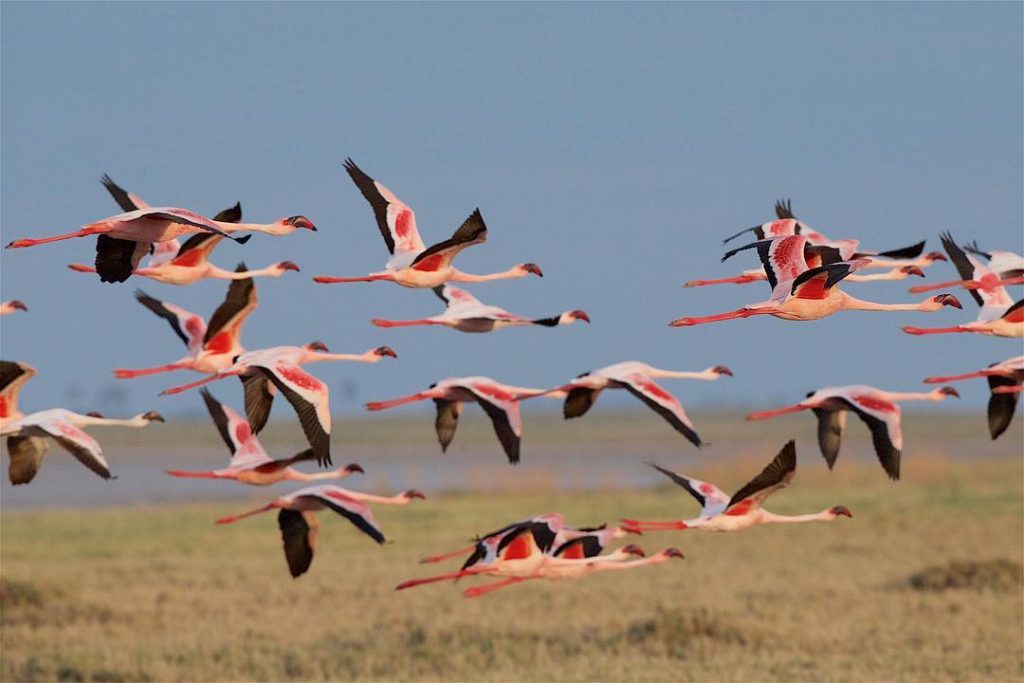
CHOBE-MAUN PHOTOGRAPHY
8 nights/9 days
KASANE> CHOBE NATIONAL PARK > SAVUTI > MOREMI/KHWAI > MOREMI/XAKANAXA > MAUN
Overview
Game Drives
Guided Walk
Boat Cruise
Photographic Tour
This photographic safari consists of a camping trip from Kasane through the southern part of Botswana to Maun. The camping part is a guided group tour tourist destinations in the country. Explore Botswana’s top game reserves where safari highlights include Chobe’s famously large herds of elephant, abundance of wildlife in Savuti located within Chobe National Park and game drives in predator-rich Moremi Reserve.
The unique aspect of embarking in this tour, is having a professional photographer with many years of experience photographing Botswana, along with a guide who understands the importance of lighting and being in the right position in order to capture the best moments in the best destinations in Botswana. The trip is suitable for both experienced and beginner photographers.
Gallery
DAY 1-2: KASANE/CHOBE NATIONAL PARK
After your arrival at Kasane International Airport, you will meet our representative with a signage board written “IMELA WILDERNESS”. Our guides will be waiting to transfer you to the lodge where we will be staying. The town of Kasane is situated on the banks of the Chobe River in the far north east of Botswana. It is the gateway to the Chobe National Park and also to 3 other countries, being located right at the “Four Corners”.
After lunch is a siesta and you may take a swim or take a rest in your room before we leave for an afternoon game drive along the Chobe River where we will see big herds of buffalos, elephants, pods of hippos, and prides of lions. Chobe is a unique park because during dry season big herds of animals congregate along the river. You will see elephants swimming from one bank to the other, buffalos crossing to the island. Get back from a beautiful game drive freshen up and have dinner. Time of going to bed is determined by the last guest.
Wake up, have quick breakfast before departing for a morning game drive which is longer, you will also have an opportunity to observe the animals close. Chobe also boasts two antelopes rarely encountered elsewhere in Botswana – the puku and the Chobe bushbuck Both the puku and the bushbuck have a number of predators to contend with, from lion, hyena and leopard, to African wild dog.
Get back to the lodge after a beautiful drive, have brunch and after that is siesta time. At 15.00 pm we depart for a beautiful sunset boat cruise along the Chobe River. You will see a lot of animals and come close to crocodiles and pods of hippos from the boat and at times may see lions. We get back to the lodge, after sunset dinner is at 20.00pm at a local restaurant (own expense). Time of going to bed is determined by the last guest.
DAY 3-4: SAVUTI
Savuti region is situated in the southern stretch of Botswana`s Chobe national park. Recognized as a prime game viewing area, the Savuti (also spelt Savute), covers almost 1,930 sq. miles (5,000 square km) in the south west of Chobe National Park.
Undoubtedly it is the interaction between lion and elephant that is the most interesting aspect of Savuti. The area is inhabited by a huge pride of lions with numbers fluctuating from 20-30 members. These remarkable lions have learned over the years how to hunt these massive pachyderms that are supposedly above predation. Launching their attack under darkness and
using their numbers, they manage to kill adolescent and even young adult elephant. The marsh is prime cheetah country and in the wet season it is not unusual to have the wild dog hunting here in Central Chobe. Lion and the Spotted Hyena live in constant battle for survival. Other commonly sighted species are zebra, elephant giraffe, kudu and buffalo.
The surface water that is pumped by the Government here provides a major attraction for birdlife. In the dry season thousands of dove and sandgrouse come down to drink in the mornings and are under constant surveillance by Yellow-billed Kite, Tawny Eagle and African Hawk-Eagle. Red-crested Korhaan are common in the Kalahari Apple-leaf (Lonchocarpus nelsii) veld. The marsh is the summer home for good numbers of Caspian Plover* and Montague’s Harrier* as well as Chestnut-backed Sparrowlark, Grey-backed Sparrowlark, Northern Black Korhaan, Rufous-naped Lark, African Pipit and Desert Cisticola. Dickenson’s Kestrel, Amur Falcon* and Red-necked Falcon are found along the
perimeter of the marsh.
The drive is a bit longer from Chobe to our exclusive campsite in Savuti; however, the drive is much enjoyable as you will see lots of birds and animals on the way. The scenery is amazing and very African looking, with lots of acacia tortilis with giraffe feeding and many more including the most photographed bird, lilac breasted roller. We camp wild at an exclusive campsite for 2 nights, enjoying the activities on a day to day basis.
DAY 5: MOREMI KHWAI (NORTH GATE)
Wake up and have breakfast before we depart to Moremi Game Reserve. It is situated in the eastern part of the Okavango Delta, bordering the Chobe National Park on the south-western part of the Park. The Moremi Game Reserve covers almost one third of the Delta. The Khwai River forms a boundary between the reserve and the community area. We spend the following two nights camping at an exclusive campsite in the community area, exploring the Khwai floodplains on game drives both during the day and at night. Exploring after dark with spotlights offers you an opportunity to experience some of the nocturnal animals that are rarely encountered during the day. We will also have the opportunity to explore the surrounding wilderness on foot (please note that this activity is seasonal based on rains and grass height, your guide will determine the safety of walking in Khwai) and mokoro and enjoy an up close and personal encounter with Botswana’s flora and fauna. It is important to note that night drives and guided walks are not permitted within the national parks and reserves. These activities are conducted outside the boundaries of the
Moremi Game Reserve in the Khwai community area.
The Khwai region boasts excellent populations of both bull elephant as well as breeding herds. Lion, leopard, serval and African wildcat are common predators of the region with wild dog and cheetah being less common. Buffalo use this area seasonally with large herds moving in during the summer rains. The swampy areas in the west are home to red lechwe. Other ungulates include tsesebe, blue wildebeest, giraffe, kudu, sable antelope, roan antelope and impala.
Common birdlife include Mecca’s, the uncommon Rosythroated Longclaw and the Bat-Hawk. Other interesting raptors here are Cuckoo Hawk (rare), Long-crested Eagle and Black Sparrowhawk. More commonly Tawny Eagle, Steppe Eagle, Lesser-spotted Eagle, Martial Eagle, Bateleur and African Hawk-Eagle. The waterways host Africa Rail, African Crake, Greater Painted Snipe, Allen’s Gallinule, Lesser Jacana and Lesser Moorhen.
DAY 6-7: MOREMI XAKANAXA (THIRD BRIDGE)
We wake up to have a quick breakfast before we take a trip to Xakanaxa-Moremi game reserve. Set-aside in 1963 by the Batawana tribe, the Reserve is rated as Africa’s most beautiful game reserve. Our drives will take us to the park’s most beautiful areas such as the third bridge, Bodumatau and dead tree island. Game is plentiful and the sightings include elephant, buffalo, giraffe, lion, hyena, jackal and many different antelopes including red lechwe and shy sitatunga; a web-footed antelope perfectly adapted to life in the swamps, Wild dog, whose numbers are so rapidly decreasing elsewhere, are regularly sighted in the Moremi game reserve, It is the great diversity of plant and animal life that makes Moremi so well known. The reserve contains within its boundaries approximately twenty percent of the Okavango Delta.
Moremi lies on the eastern extremity of the Okavango Delta. Habitats here range from wide-open floodplains, marshes, lagoons, papyrus fringed channels, vast stands of Miscanthus and Phragmites, woodland and savannah. As a result of the extremely variable habitat the diversity of both wildlife and birdlife is excellent.
Moremi is amongst the best game reserves in Africa for viewing the endangered African wild dog. Xakanaxa is home to a resident herd of several hundred buffalo whose range covers the territories of at least 4 prides of lion which may often be seen flanking the ever moving herd. Breeding herds of elephant
move between their browsing areas in the mopane forests and the fresh water of the Okavango. Red lechwe a one of the more unusual antelope species and commonly found here.
The swampy areas of Xakanaxa are home to African Rail,
Coppery-tailed Coucal, Black Coucal*, Red-chested Flufftail, African Crake*, Black Crake, Chirping Cisticola, Luapula Cisticola, Purple Swamphen, Allen’s Gallinule to name but a few. The open
waters attract African Skimmer, Saddle-billed Stork, Yellow-billed Stork, Intermediate Egret, Goliath Heron, African Fish Eagle as well as the globally threatened Slaty Egret and Wattled Crane.
We will camp in the Wilderness for 2 nights enjoying the activities on a day to day basis.
DAY 8: MAUN
We will wake up in our camp site, have a quick breakfast and a short game drive before departing to Maun where we will be staying overnight in a lodge. Maun has grown rapidly from its early days as a small, rural frontier and has now spread along the wide, Thamalakane River. It now boasts hotels and lodges as well as car and 4-wheel drive vehicle hire. However, it retains a rural atmosphere and, as befitting its role as the hub of the Delta’s safari industry, travelers pass through here on their way to the Okavango Delta.
Our trip will end here and there will be a transfer available to Maun International Airport (included in the price)
TOUR ENDS
Safari Accommodation
CAMPING NIGHTS:
5 nights camping
LODGING:
3 nights lodging
A non-participatory wild camping with en-suite facilities (5 nights) and lodging (3 nights). Imela Wilderness will provide a bucket shower with warm water off the fire. Imela wilderness (also) provides, comfortable bedroll fully equipped with linen, towels, chairs with backrests and, tents (3×3 m meru tents), mosquito gauze on door & windows); are large and easy to erect. Imela Wilderness chef prepare fresh meals in the camp on site.
Note; All our tours are non-participatory, meaning we have enough staff to do the camp chores while you sit and enjoy your safari.
Details
Included in Your Safari
The quoted price includes all accommodation, park entry fees (except Vic Falls), excursions, transfers and border fees.
ITINERARY INCLUDES:
- Park & Reserve entry fees
- Pick up and drop off at the airport
- Use of camping equipment (mattresses)
- Transport in 4X4 game viewing vehicle (game drive vehicle, trailer)
- Vehicle Fridge
- Tea/coffee and hot chocolate
- Professional Guide
- 2 Game drives per day
- Chef
- Mokoro activities
- Mokoro pooler fees
- Entrance fees to the delta
- Boat Cruise in Chobe
- Lodge accommodation in Maun, Kasane/Chobe National Park & Victoria falls Zimbabwe
ITINERARY EXCLUDES:
- Scenic flight over the Okavango delta
- Park Entrance fees to the falls
- Boat cruise in Okavango delta
- Staff tips
- Premium wines
- Emergency evacuation
- Curios
- Insurance
- All flight tickets unless otherwise indicated
- Items of personal nature
- Any drinks at lodges or accommodation other than Imela Tented camps unless stated.
Easy Payment Options
40% Deposit to confirm booking. Balance due 6 weeks prior to departure.
